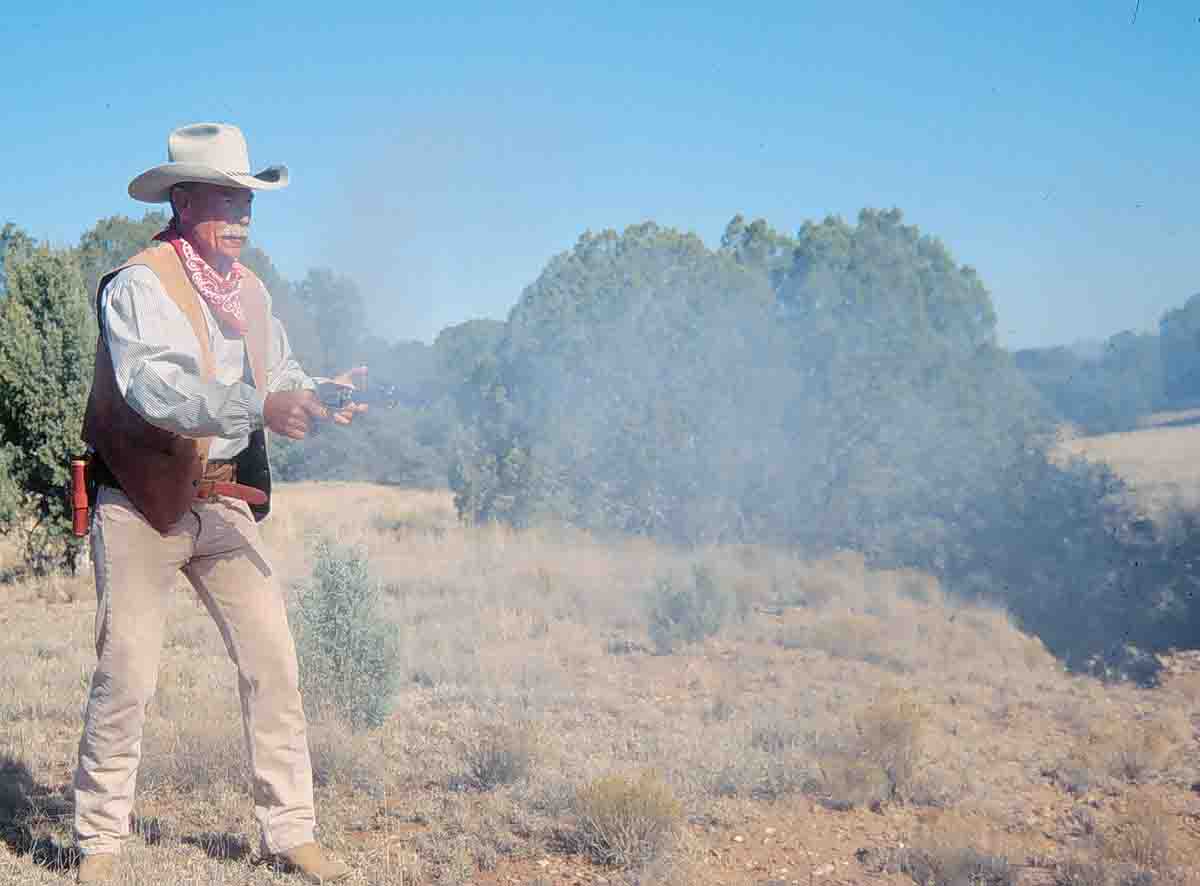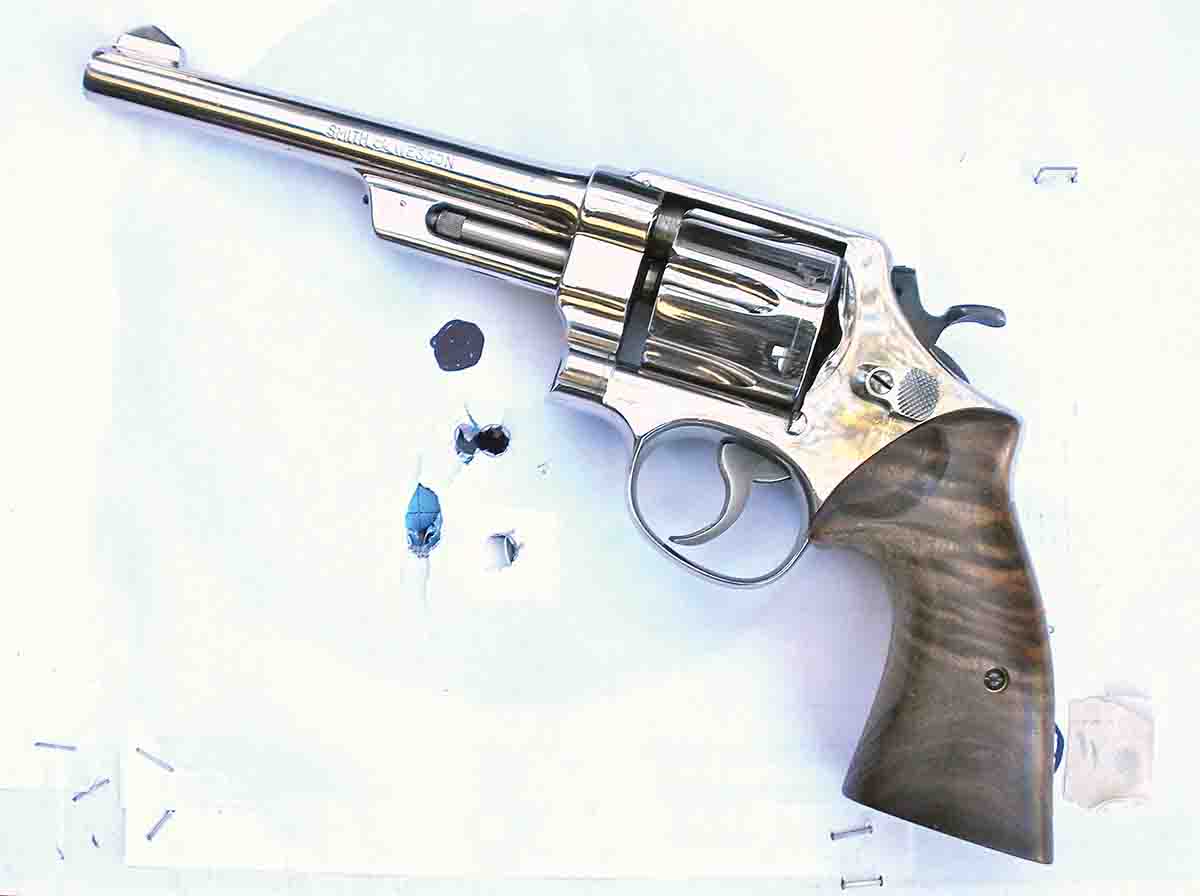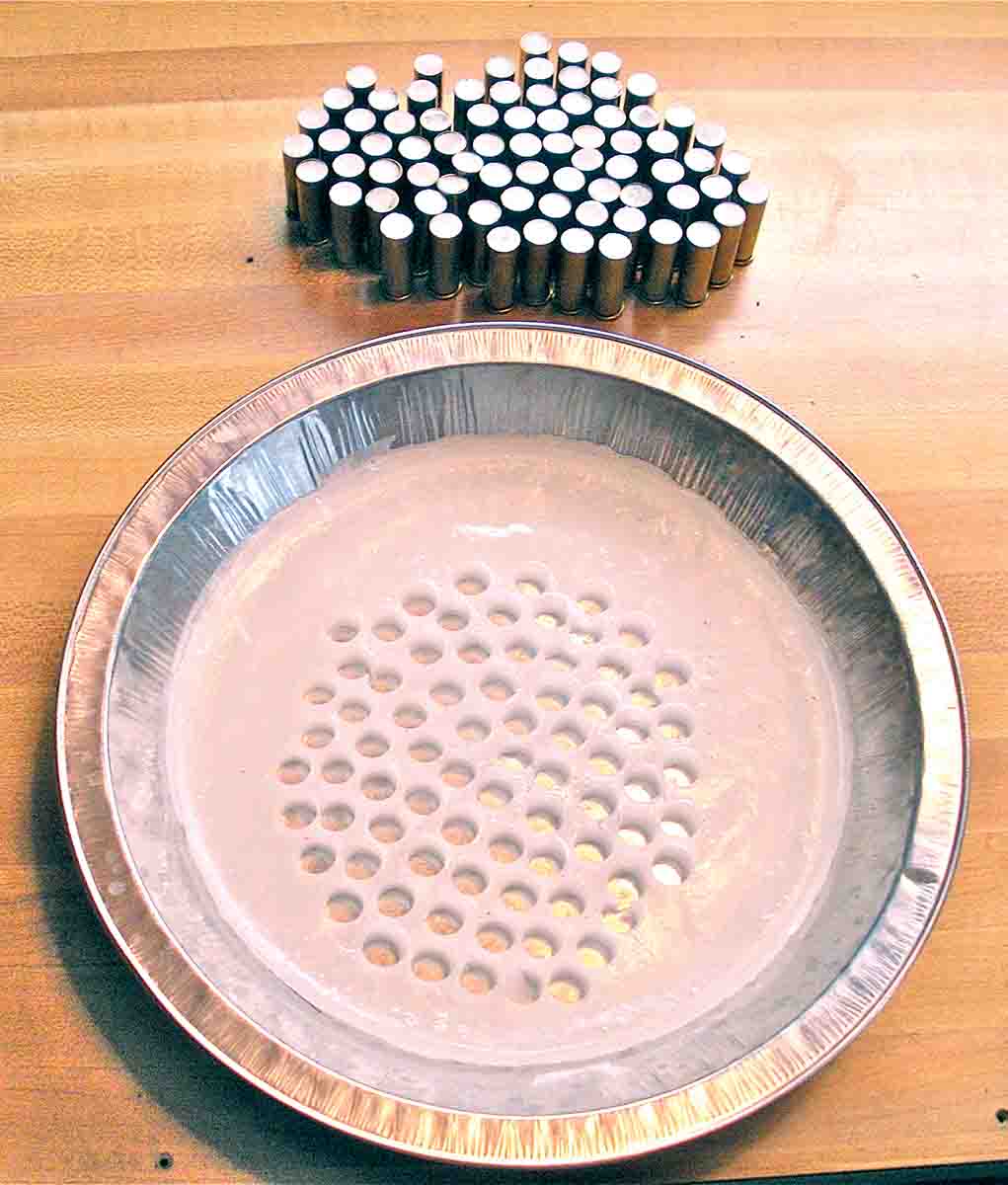Reloader's Press
Learning To Shoot Handguns
column By: Dave Scovill | February, 18

I also have tapes and videos of some of the past sixgun experts, including Ed McGivern, Bob Munden, Ernie Lind, Thell Reed and, more recently, Jerry Miculek. There are also videos available from the Cowboy Action Shooting Society (SASS) that demonstrate technique, range etiquette and safety rules. If a shooting instructor is available locally, by all means consult with them about training.
In the 1950s, Bill Jordan performed on live television for a program called “You Asked for It” in response to a viewer question about accuracy and speed with a handgun. Jordan did a bit of quick draw, balanced a ping pong ball on the back of his hand, then drew the sixgun so fast as to bounce the ball off the gun barrel. That was followed by drawing the gun and the ball landing in the empty holster as the sixgun came to hip level. He then proceeded to shoot aspirin tablets from the hip with wax bullets at a range of maybe 6 feet or so.

As a pre-teenager, I was astounded by Jordan’s skill with that Smith & Wesson double action and spent years attempting to emulate Jordan’s skill at hip shooting with a High Standard Sentinel nine-shot revolver and, later, an old S&W double action only .38 S&W. After dropping the gun a few times, however, further attempts at quick draw were abandoned, starting with my hand on the gun butt, followed by deliberate movement to level the gun at the target and pull the trigger. Quickness and accuracy came only after months and/or years of practice and consumption of hundreds, if not thousands, of .22 Long Rifle and wax bullet loads in the S&W.
The challenge in the early going was learning to make wax bullet loads, which requires a block of (canning) wax melted in a double boiler with water in the lower pan so the heat from the stove wasn’t on the same pan that held the wax – to prevent a fire. With sufficient wax to form a .3- to .5-inch-thick wax sheet in a pie tin, the heat is turned off. Then, before the wax completely cools, use a sized, unprimed .32- to .45-caliber case as a cookie cutter to cut a wax “bullet” from the semi-firm wax sheet. Then install a primer in the case which has the primer flash hole drilled out to about .10 inch diameter, to keep the primer from backing out of the pocket and tying the gun up upon firing. Note: If the primer is installed before the bullet is cut from the wax, air pressure will push the wax out of the case mouth. Standard pistol primers are sufficient.
Speer has sold plastic cylindrical-shaped bullets and cases in .38, .44 and .45 caliber for many years that eliminate the hazards of dealing with hot wax on a stove. They proved quite durable and lasted for several years when fired into a cardboard box at a .5-inch, or smaller, black spot for a target. Eventually wax or plastic slugs were fired into the box, and the remaining shots were simply fired at that hole.
Wax and plastic bullets propelled by a primer only will shoot through both sides of a cardboard box, assuming it is closed on front and back, so a towel was draped over a rod so it stopped the wax or plastic bullets after penetrating the front of the box, where they fall to the bottom and are collected.

For those who prefer to bring the gun up to use the sights, this exercise will help align the sights and point the muzzle at the intended point of impact as the gun comes up, so it is ready to be fired when the sights are on the target. After some practice the trigger can be pulled at the hip or raise the sights until they are in line with the object of interest. Practice with sights, of course, helps to improve accuracy with hunting loads in big-bore handguns or for personal defense.
In the real world, however, when using a Smith & Wesson .44 Magnum with stout handloads – aiming the first shot to get a tin can rolling and firing the next five double action at the moving can as fast as recovery from recoil allows the sights to be reacquired – slows the process down considerably. Conversely, locking the elbow down from a slight crouch with a two-hand grip on the sixgun leveled on the target helps to control recoil considerably.
Indoors, in the basement or garage, practice with wax or plastic bullet loads was generally confined to winter months when foul weather precluded outdoor work. The rest of year, live ammunition with cast bullets was used outdoors to shoot at impromptu targets, e.g., rocks, tin or aluminum cans, in an area to stop errant bullets or ricochets, such as the bank of a dry wash or arroyo or a dirt berm on a remote stock tank in the backcountry. During those 40-plus years of work with handguns, indoors or outdoors, with the youthful exception noted above, there has been no attempt at “fast draw” (aka, leather slapping) with a loaded gun.
While most wax bullet work was done with double-action S&W Models 10, 19 or 20, single actions were used regularly. For the first shot at least, the single action is possibly faster than the double action, but the Colt .45 weighs more than a S&W K-frame, which is noticeable in terms of speed and requires cocking with the thumb for each shot. The thumb of the shooting hand, left or right, and both hands in two-gun practice was used with single- and double-action revolvers. From photos it appears most SASS competitors use the thumb of the weak hand to cock the single action with a two-hand hold, which effectively precludes any two-gun or weak-side skill.
Eventually I found myself in the wide-open spaces on BLM land with the PACT timer, the S&W .44 Magnum Mountain Gun and a couple of boxes of Winchester 240-grain factory loads. Starting with my hand on the gun butt, the timer started with a “beep” and recorded the elapsed time to the first shot. After a few trial runs aimed at an aluminum can tossed out to around 6 to 10 yards or so, the average time for the first shot was around .3 second, about the same time it takes for a black bear to run 27 feet. For comparison, Ed McGivern put six shots in a playing card at 15 feet in 2⁄5 (.4) second in the 1930s.
A few years ago, former staffer and Crockett County, Texas, Sheriff Jim Wilson mentioned charcoal briquettes as impromptu targets. Toss a few out on the ground and shoot from the hip. Assuming they are hit with a bullet, they fragment and become biodegradable powder. Either way, Jim’s expertise with a handgun suggests he has been there, done that.
In the last few years, I’ve shot a lot of Speer and Hornady swaged lead .38-, .44- and .45-caliber semiwadcutters in respective sixguns when practicing instinctive/point shooting. They shoot well enough with practice loads to know the load and/or gun did not cause a miss.
Of course, it is important to spend time on the bench or field practice to gain more practical skills. For woods bumming, a sixgun is largely just so much dead weight, along with the holster, belt and ammunition, but when you need it, you can’t use it if you don’t have it, and you should know how to use it without shooting yourself in the foot.
Most expert instructors, with the exception of the late Jeff Cooper back in his leather-slapping days, tend to assume a “lowest common denominator” approach in skill level and scoff at the idea of not using the sights, whether you can see them in darkness or not.
Then too, photos of U.S. Border Patrol personnel using the point-and-shoot position with the sixgun held somewhat above belt level offers testimony that one of the most elite law enforcement organizations understands the value of diversified training.
For some, a double-action .22 rimfire might be the best choice for early going, or a midsized centerfire .38 Special, aka Smith & Wesson Model 10. Above all, practice should be purposeful but fun – enjoyable whether all the bullets hit their target or not – and 100 percent safe. As I’ve mentioned on more than one occasion: If you toss enough lead in the air, sooner or later you will hit what you aim at.


